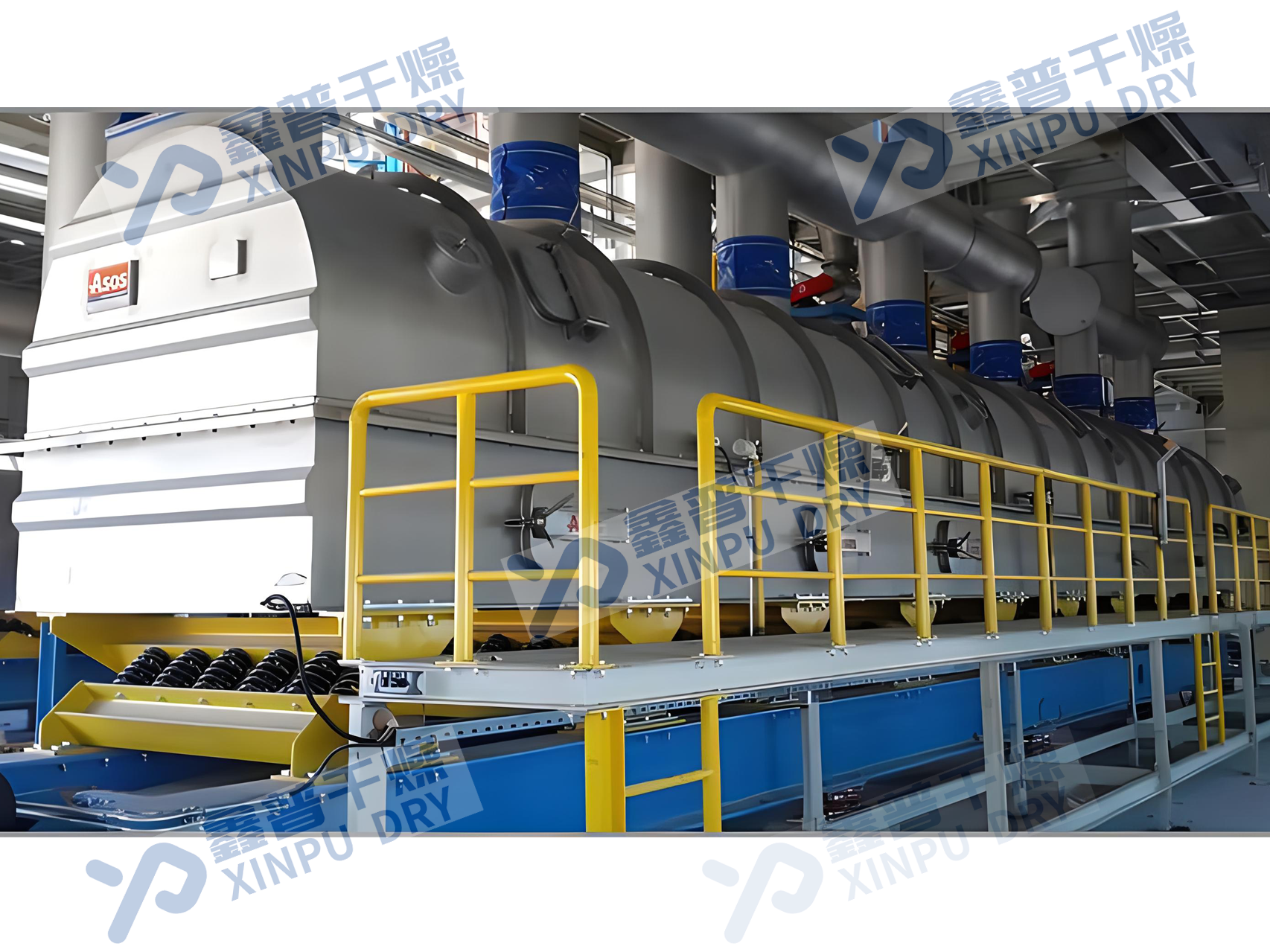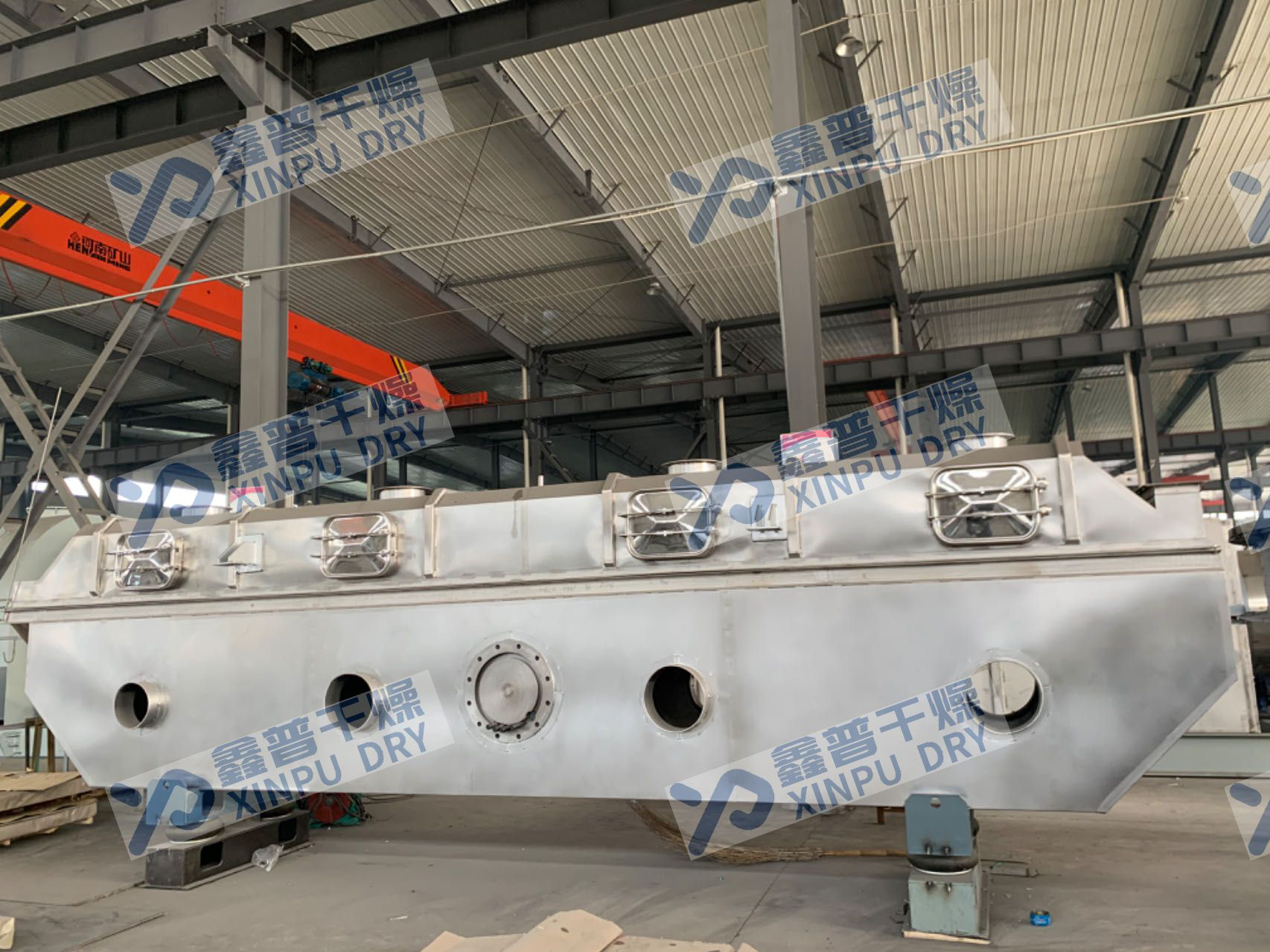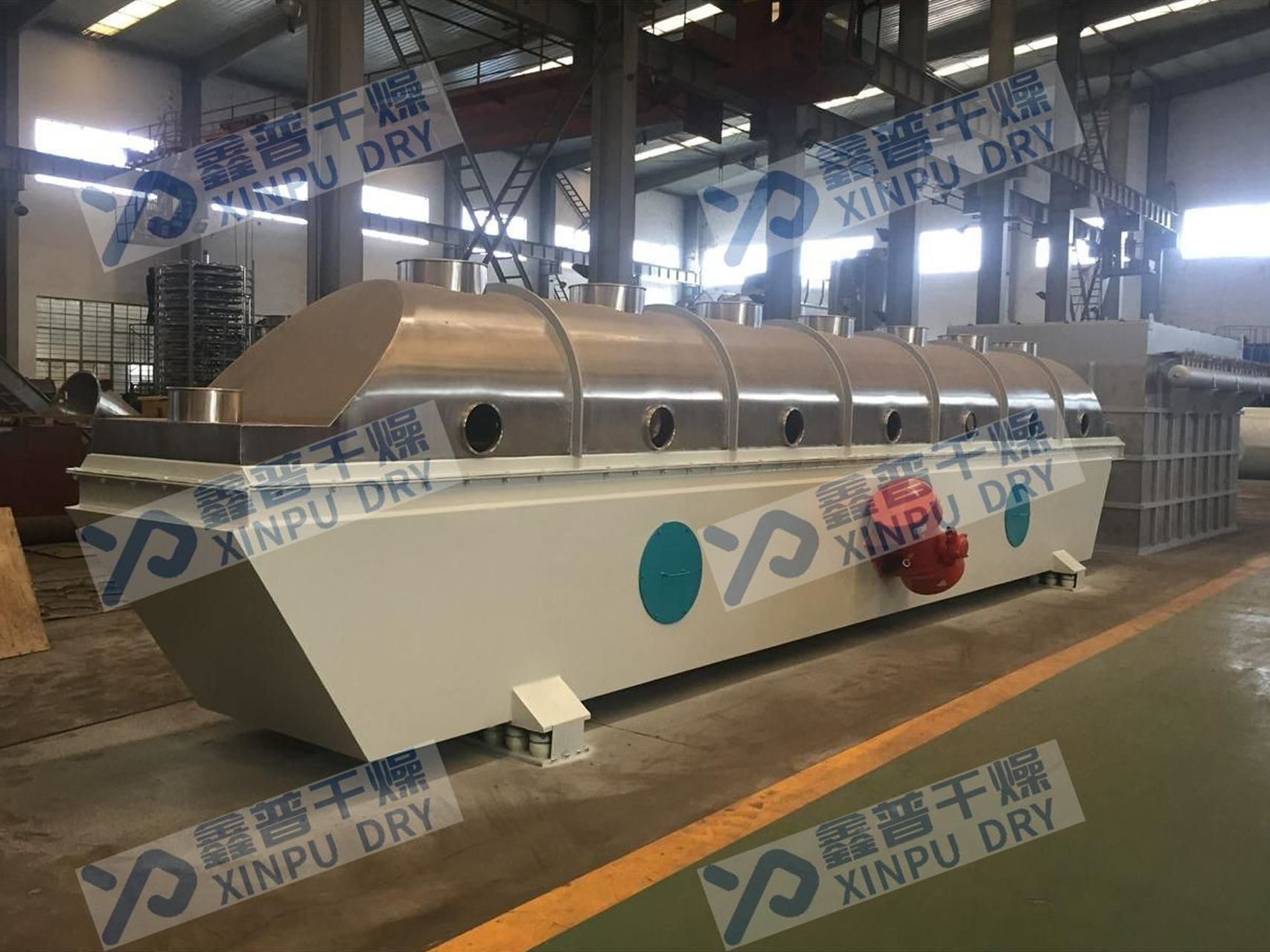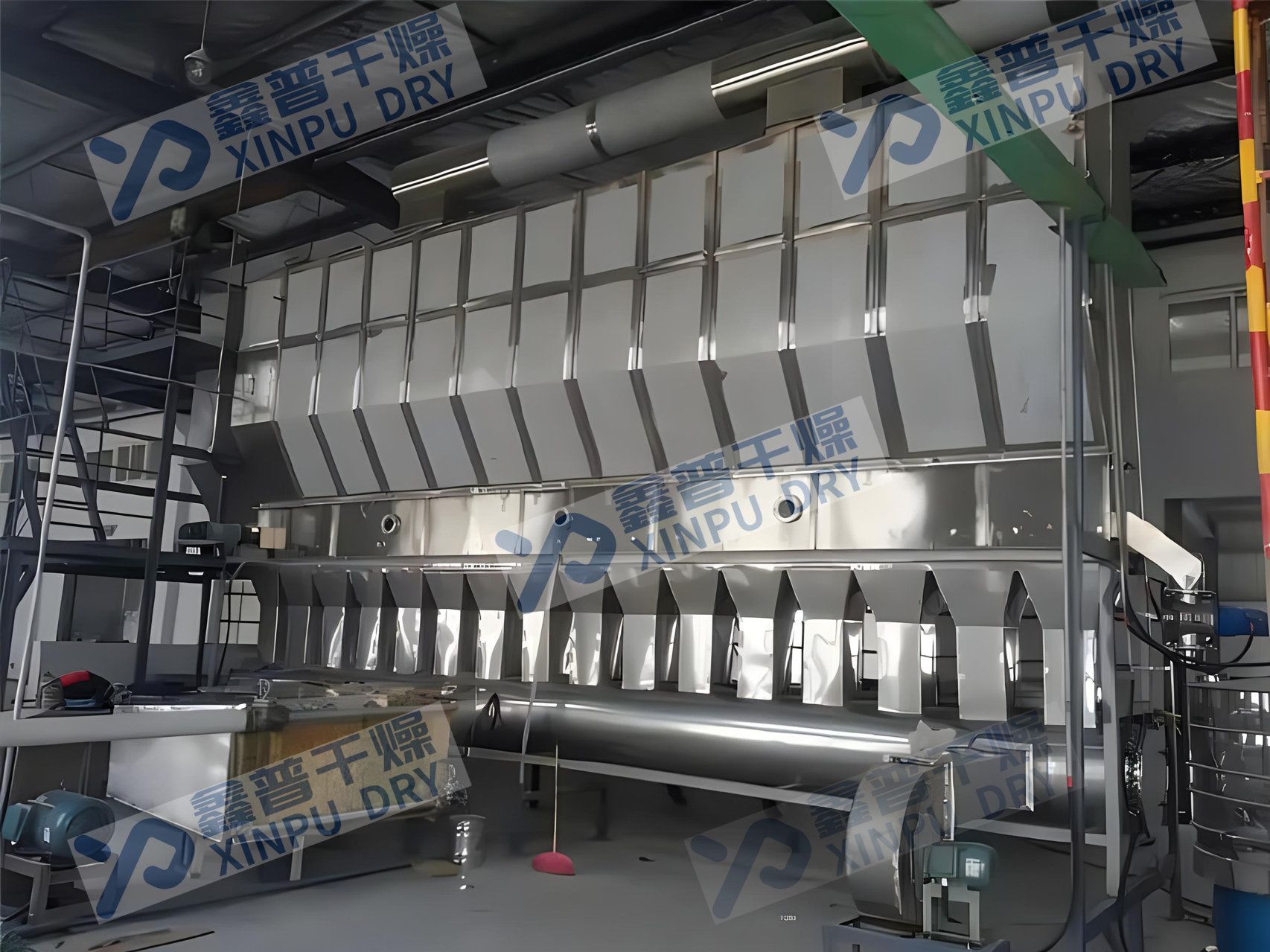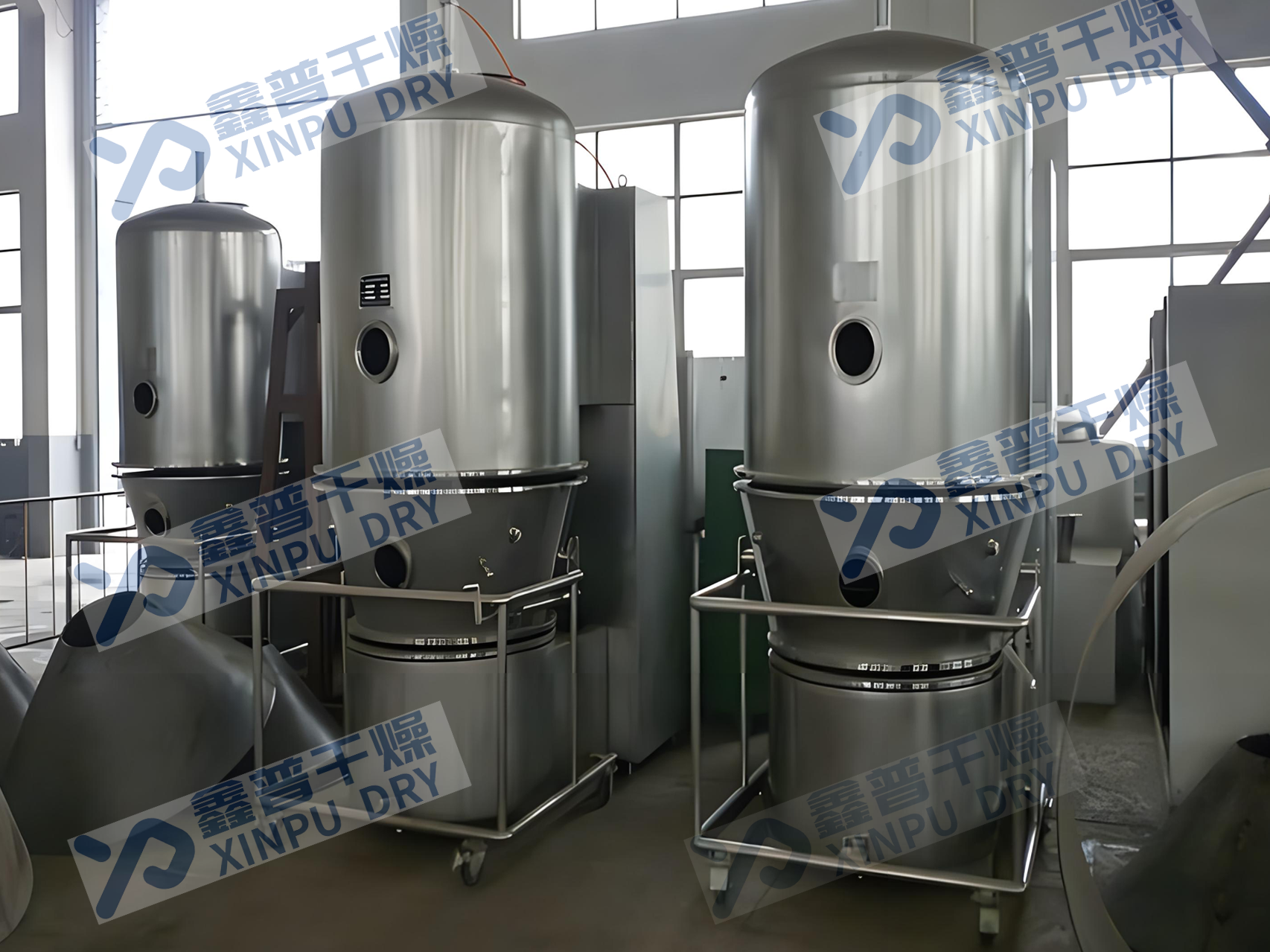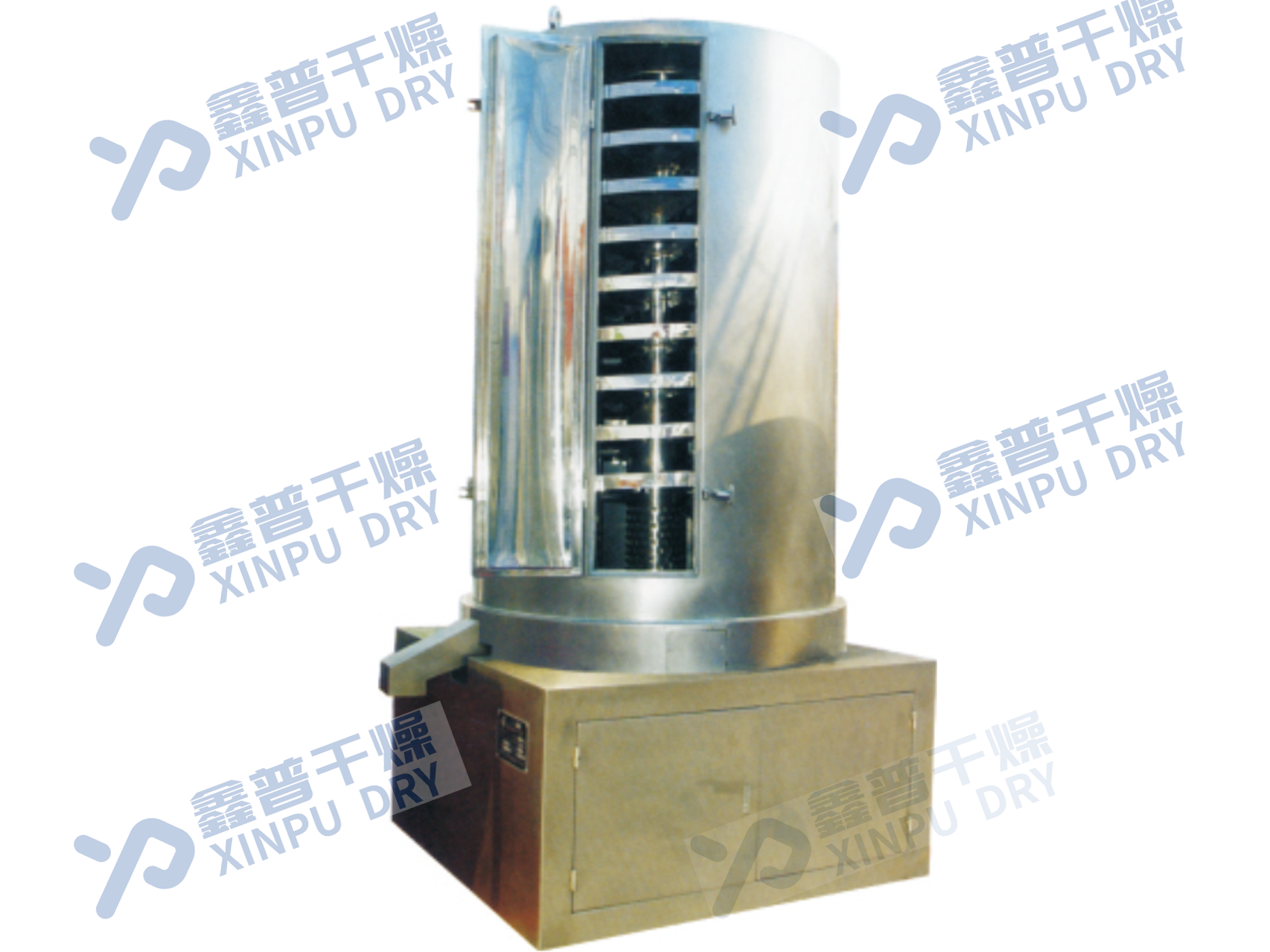Principle of operation
The material enters the machine from the feed inlet. Under the excitation force, the material is thrown along the horizontal fluidized bed and continuously moves forward. After the hot air passes through the fluidized bed upward to exchange heat with the wet material, the wet air is separated by the cyclone separator, and the bag dust collector is exhausted by the exhaust air after dust removal. Most of the dry products are discharged from the main machine outlet, and a small amount of powdery materials are discharged from the cyclone separator.
Process flow diagram
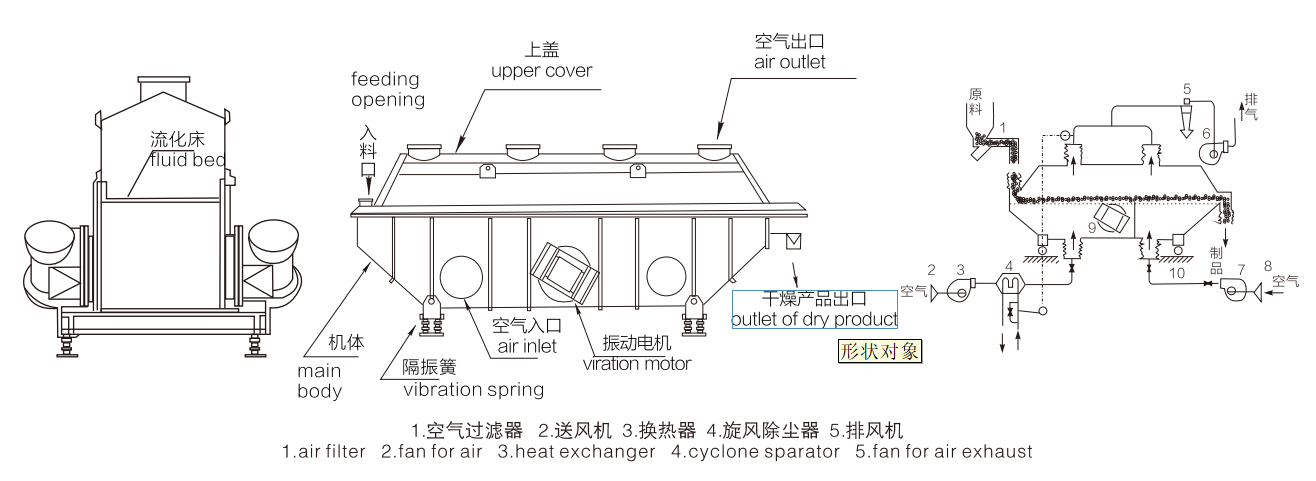
Performance characteristics
◎ The vibration source is driven by vibration motor, which has the advantages of stable operation, convenient maintenance, low noise and long service life.
◎ Fluidization is well-proportioned, and there is no dead space and blow-through phenomenon, so that even dried and cooled products can be obtained.
◎ Good adjustability and wide application range. The thickness of the material layer, the moving speed in the machine and the change of full amplitude can be adjusted stepless.
◎ The damage to the surface of materials is small. It can be used to dry fragile materials, and the working effect will not be affected when the particles of materials are irregular.
◎ Fully enclosed structure is adopted, which effectively prevents cross-infection between materials and air, and the working environment is clean.
◎ The mechanical efficiency and thermal efficiency are high, and the energy saving effect is good, which can save 30-60% compared with the general drying device.
Adaptive material
Suitable for drying and cooling powdery and granular materials in chemical, pharmaceutical, food, dehydrated vegetables, grain, mineral and other industries. Such as: citric acid, monosodium glutamate, borax, ammonium sulfate, compound fertilizer, radish, silk, soybean meal, distiller's grains, seeds, slag, sugar and so on.
Technical specifications
Type | Fluidized bed area(M2) | Intake air temperature(℃) | Air outlet temperature(℃)) | Water evaporation capacity(kg) | Vibration motor power(Kw) |
ZLG3×0.30 | 0.9 | 70-140 | 40-70 | 20-35 | 0.8×2 |
ZLG4.5×0.30 | 1.35 | 70-140 | 40-70 | 35-50 | 0.8×2 |
ZLG4.5×0.45 | 2.025 | 70-140 | 40-70 | 50-70 | 1.1×2 |
ZLG4.5×0.60 | 2.7 | 70-140 | 40-70 | 70-90 | 1.1×2 |
ZLG6×0.45 | 2.7 | 70-140 | 40-70 | 80-100 | 1.5×2 |
ZLG6×0.60 | 3.6 | 70-140 | 40-70 | 100-130 | 1.5×2 |
ZLG6×0.75 | 4.5 | 70-140 | 40-70 | 120-140 | 2.2×2 |
ZLG6×0.9 | 5.4 | 70-140 | 40-70 | 140-170 | 2.2×2 |
ZLG7.5×0.60 | 4.5 | 70-140 | 40-70 | 130-150 | 2.2×2 |
| ZLG7.5×0.75 | 5.625 | 70-140 | 40-70 | 150-180 | 3.0×2 |
ZLG7.5×0.9 | 6.75 | 70-140 | 40-70 | 160-210 | 3.0×2 |
| ZLG7.5×1.2 | 9 | 70-140 | 40-70 | 200-260 | 3.0×2 |
| ZLG9×1.2 | 10.8 | 70-140 | 40-70 | 250-300 | 4×2 |
| ZLG9×1.5 | 13.5 | 70-140 | 40-70 | 280-360 | 5.5×2 |
| ZLG9×1.8 | 16.2 | 70-140 | 40-70 | 320-410 | 7.5×2 |
| ZLG9×2 | 18 | 70-140 | 40-70 | 390-500 | 7.5×2 |


